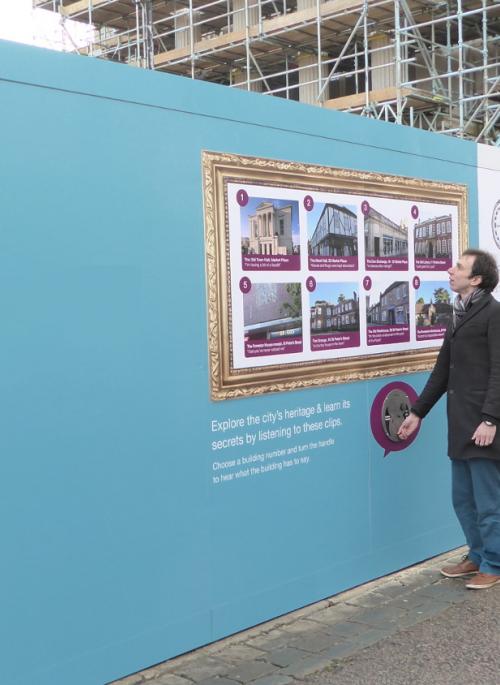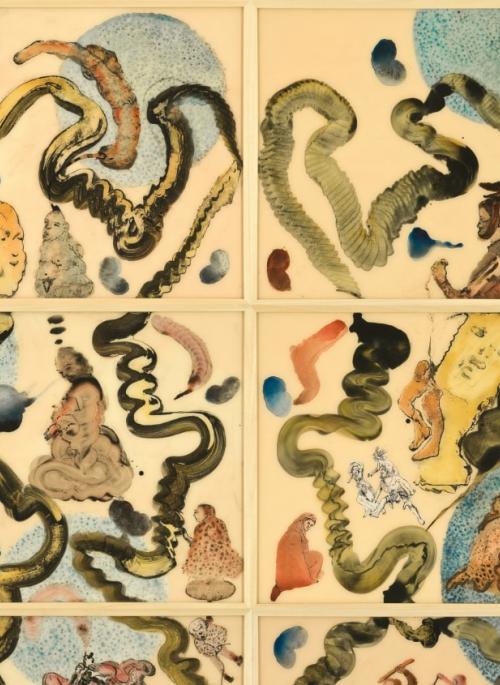For over 100 years the St Albans School of Art was at the heart of St Albans artistic community. Following the addition of Maurice Field's 1957 painting of Students at the St Albans School of Art, we want to start collecting memories from those associated with the school.

Share your memories with us!
St Albans Museum + Gallery is looking for anyone connected to the St Albans School of Art to share their memories with us.
We are asking for written memories of the school to start our research as we work to ensure the school is remembered in our collections. In the future this may include oral history interviews, collecting photographs or artworks and possibly an exhibition but at the moment we are starting with written memories.
If you had a connection with St Albans School of Art and would like to share your story, email us at museum@stalbans.gov.uk with the subject line “St Albans School of Art” and your submission (max. 400 words).
We look forward to hearing from you!
We would like to ask your permission to use your text submission, and any photographs we have taken/you have given us in connection with your recording, in any of the following ways, now or in the future:
- As a lasting resource in St Albans Museums archive
- In exhibitions and displays in venues around the community
- In leaflets and publications
- On the internet
By sending us your text submission, you hereby assign to the Museum all copyright in your contribution for use in all and any media. You understand that this will not affect your moral right to be identified as the ‘writer’ in accordance with the Copyright, Design and Patents Act 1988.
If you have a memory you would like to share with the museum but not publically please get in touch and we will discuss how that can be arranged.
A Brief History of St Albans School of Art
St Albans School of Art opened in 1890 in a building at the top of Victoria Street. It was based on a very popular model at the time: each town would have their own art school providing practical training to artists and craftsmen in the region. A quality institution, it was described by Her Majesty’s Inspector of Schools as dispensing “good, careful, and painstaking teaching”.
A product of its time, the school adapted its curriculum to the innovations of the Bauhaus teaching model both in Art and Design in the 1960s. Legitimising art practices, the National Diploma in Art and Design allowed these fields to be brought at the same level as other academic fields. In the 1970s, St Albans School of Art subsequently developed a degree and a foundation course.
The foundation degree was very selective and competitive and regarded as a strong feeder to the most prestigious London schools such as Chelsea, Camberwell, Slade, as well as regional city schools. The programme was well funded and supported by a strong team of practising artist tutors: Sculptor John Mills, Painters Arnold Van Praag and Roger Leworthy, Printmaker John Brunsden , Bill Pletts in Graphic Design, and Textile Designer Angela Dean. The school then moved to a purpose-built building on Hatfield Road in 1973.
In the 1980s, the college introduced the first part-time Fine Art degree validated by the Council for National Academic Awards. Another full-time degree was added to the cursus in the 1990s; both degrees welcomed over 200 students at a time, contributing to an important number of Fine Art alumni in the region, which led to a rich cultural life developing in Hertfordshire.
Art Therapy was another significant and innovative addition to its programme, which then expanded to welcome Dance and Drama Therapy. As Industrial Design and Model Making were added to the list of courses, an annex was opened on London Road, and the BA in Fine Arts moved to Campbell Road Offices.
St Albans School of Art merged with Hatfield Polytechnic in 1993 to become the University of Hertfordshire; It is now known at the School of Creative Art.




